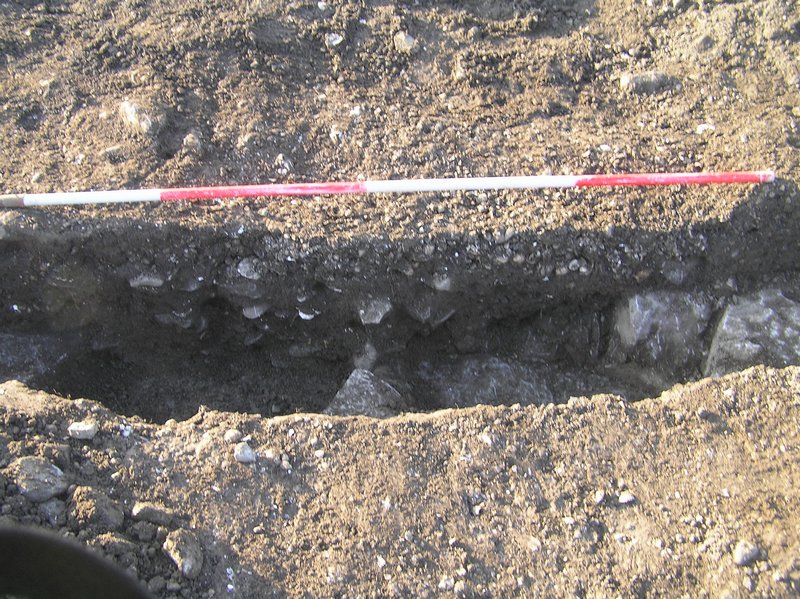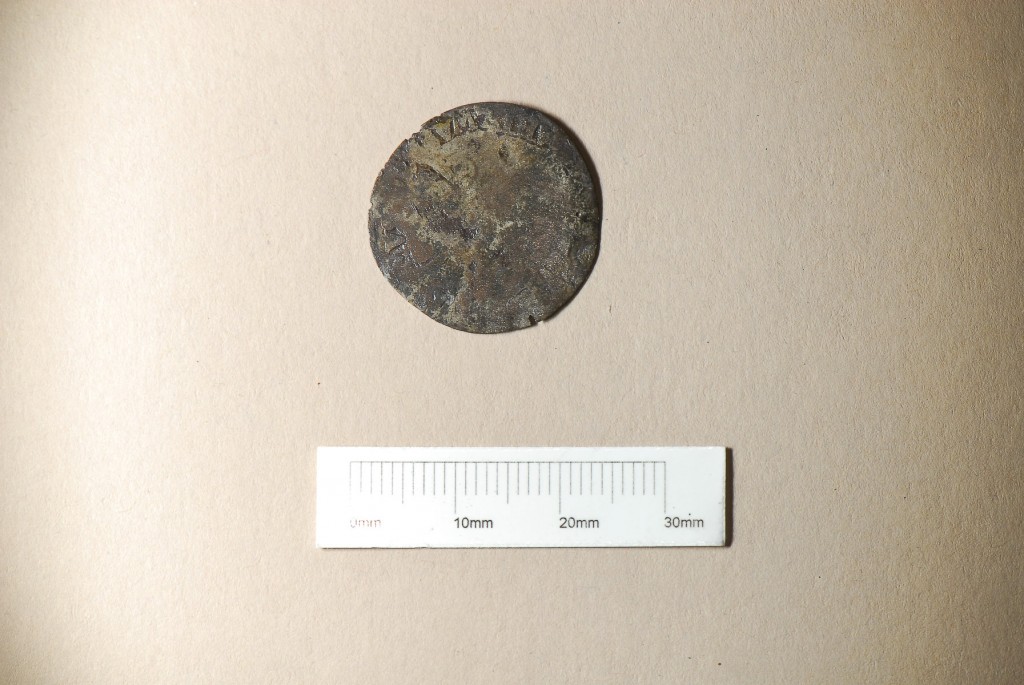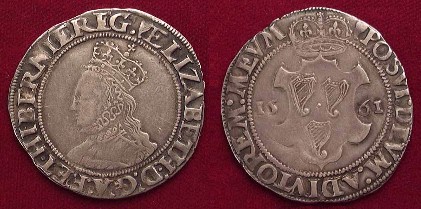In light of the Irish Times’ History of Ireland in 100 Objects series, we’re republishing our Ennis Bypass Palstave post.
This was the first artefact in our virtual museum and is deep in the bowels of our blog now. So here it is again:
We’ve also presented a report on the find including a description of the circumstances of it’s finding. We hope people find it interesting!
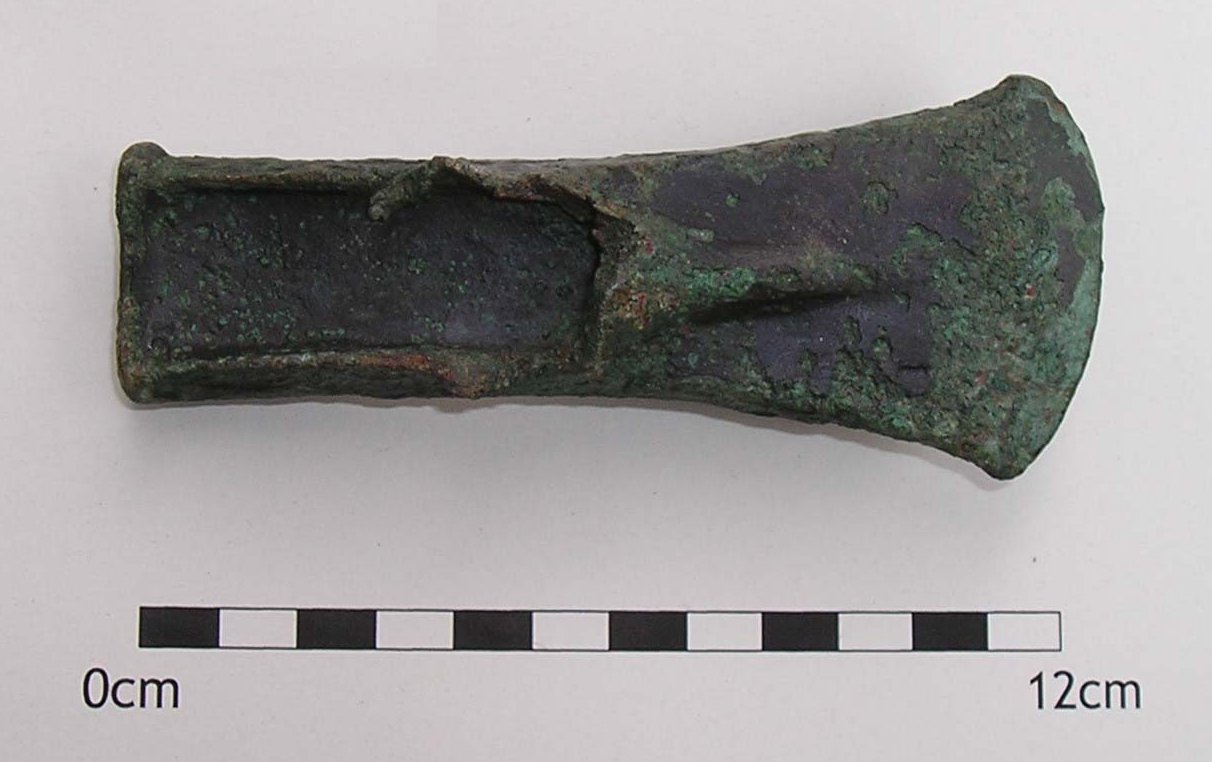
From: Rogers, T., 04. Report on linear and offset testing on the N18 Ennis Bypass, County Clare. Moore Group.
As part of the National Roads Authority programme for upgrading the N18 Limerick to Galway Road a 13.8km eastern bypass of Ennis from Latoon, outside Newmarket, to north of Barefield, at Cragard, along with 7.1km of a western relief road from Killow to Claureen, was constructed.
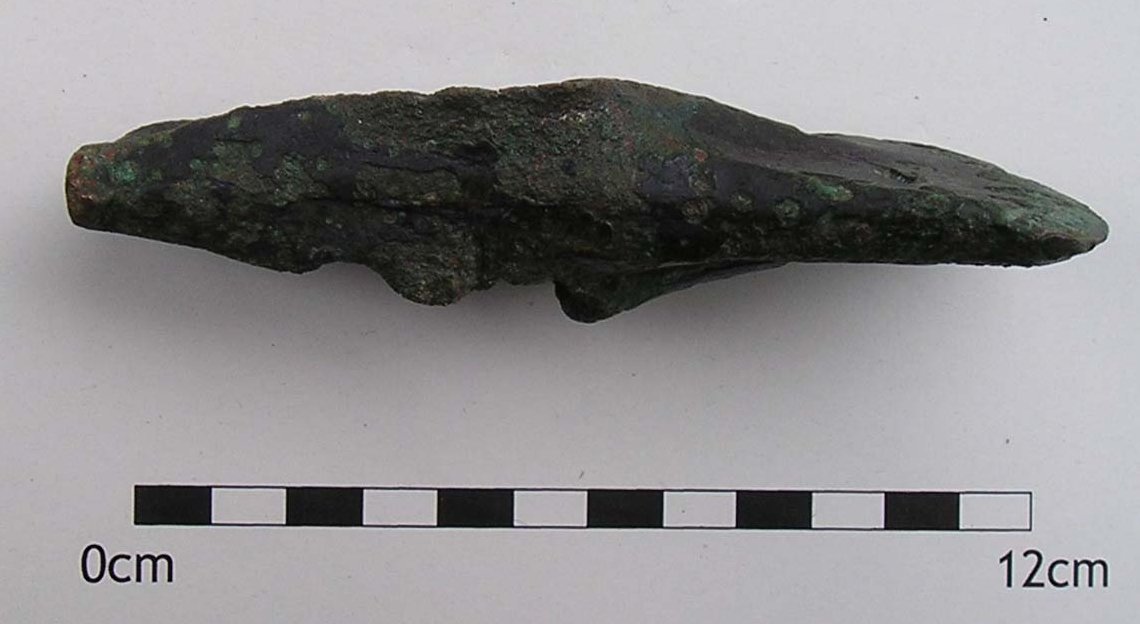
The final phase of archaeological testing on the road involved the excavation of a centreline trench along the entire length of the route with offset trenches at 25m intervals on either side. For this the scheme was divided into two. Contract 3, undertaken by Moore Group assessed the road corridor between Barefield and Killow Junction, while Contract 4 undertaken by Thames Valley Archaeological Services assessed the remainder of the scheme from Killow to Latoon and Killow to Claureen. Several archaeological sites were identified along the course of these routes and subsequently excavated. This report describes a single find, a Bronze Age Palstave discovered during Contract 3.
Discovery
The Palstave (Find no: 03E1293:005) was found in an offset trench in the townland of Ballymacahill, some 4km north east of Ennis. It lay in topsoil on a slight rise at the southern edge of a large pasture field. Exposed in the section of the trench, it lay at a depth of approximately 0.15m. An area of 150 sq m was opened around the find spot but no features were recorded. A metal detector licence was obtained (Licence no. 03R130) and both the spoil from the centreline trench and the offset in which it was found was spread out and detected but no related objects or features were found.
The field in which the Palstave was found is large undulating field, relatively smooth with occasional limestone outcrops. It is clear that the land has been improved by mechanical means as there are none of the loose limestone boulders or hazel scrub which are generally found in rougher fields in the area.
Furthermore, a large depression in the centre of the field has been used as a stone dump and plastic sacks with this matrix are testament to its fairly modern origins.
Palstave characteristics
The palstave is a development of the flanged axe in which an axe head is hafted using flaps or flanges of metal at the edges of the tool to grip the haft above the blade (Waddell 1998). The characteristic development of the palstave is the ledge stop or bar ledge stop which joins the flanges across the tool to form a continuous ‘u’ shape. This jutting ledge of metal projects to the same height as the flanges and is sometimes undercut to form a pocket. Below the stop the blade is thicker than the expanse (or septum) between the flanges. Decorative motifs which may also serve to strengthen the tool can occur on the blade below the stop.
Palstaves are known from the middle Bronze Age, occurring in north-western France, the Netherlands, Germany and Britain. In Ireland the earliest examples are associated with the metalworking phase known as the Killymaddy named after a hoard from County Antrim. This phase dates approximately 1500-1350 BC. There is considerable variation in the form of the palstave which may represent attempts to improve hafting methods. It is likely that they were used as for a variety of woodworking purposes although their value as currency cannot be overlooked given the amount of metal required in their making.
Description
The Ballymacahill palstave is 123mm long and 51mm wide with a breadth of 31mm. The flanges increase in depth from 3mm at the butt towards a depth of 11mm at the stop. They do not continue below the stop ledge. The septum is 5mm thick. The stop ledge is concave with pockets 5mm deep. There is a midrib which extends 35mm below the stop, tapering from 18mm width at the stop to 2mm at its lower end. The blade does not have a large splay, widening from 31mm at the haft end to 51mm at the cutting edge.
Classification
Irish palstaves are classified broadly into four groups A-D (Mount 1997, Waddell 1998). Group A palstaves have a ‘u’ shaped motif below the stop, occasionally with a vertical midrib forming a trident pattern. The flanges sometimes extend below the stop. Group B palstaves are similar but with a vertical midrib and flanges that always extend below the stop. The Ballymacahill palstave falls into the Group C category where flanges are not extended below the stop and the stop is often undercut. This group is subdivided into C1 where the flanges in side view form convex curves from stop to butt and C2 where the flanges have their highest point above the butt. The Ballymacahill palstave conforms to the first of these with the best surviving flange performing a slightly convex curve rising from butt to the highest point at the stop before this prominence tapers to the midrib. The stops are undercut by 5mm. Group D palstaves have narrow bodies with only slightly diverging sides and generally have a loop.
Condition
The palstave was stabilised in 2003 at Arch Con Labs Ltd. by Cathy Daly who supplied the following information regarding its condition and treatment. The metal surface is corroded, the worst affected area being the cutting edge. Pitting from Bronze disease occurs across the entire object and has disturbed the original patina. The patina is fragile, in some areas it has been completely undermined by powdery copper carbonates and much of it has been lost.
The flanges on both faces have suffered physical loss and distortion, some of this damage appears to be quite recent. On one face the stop has been deformed slightly and a small piece has broken off.
Treatment
The heavy soiling and loose copper carbonate was removed with a scalpel and no 15 blade at x10 magnification. To remove additional soiling, the object was placed in de-ionised water and brushed with a soft bristle brush. It was removed, patted dry and dewatered in IMS.
In order to prevent bronze disease recurring the object was treated with Benzotriazole (BTA). It was immersed in a 3% w/v solution of BTA in IMS and placed under a vacuum for a period of 5 days. Following removal from BTA the palstave was rinsed in IMS and allowed to air dry. It was then painted with 2 coats of Incralac lacquer to which a matting agent (Gasil fumed silica) had been added.
The loose fragment was reattached with HMG B72 adhesive prior to lacquering.
Conclusion
The Palstave was found in isolation from other archaeological features. No further metal finds were uncovered by metal detector and no features of archaeological interest were uncovered in the nearby trenches. It is clear from the appearance of the field and the presence of the large stone dump in the centre that this field has been improved by mechanical means in the last 30 years. It is likely therefore that the palstave may have been dragged to its findspot by some form of agricultural activity.
With the possible exception of a standing stone in Carrowdotia no Bronze Age monuments are recorded on the Sites and Monuments Record in this immediate area. However it is clear from the abundance of ringforts that the area was populated in the later prehistoric and early Christian periods. Furthermore, considerable evidence of prehistoric activity was uncovered on Contract 4, a few km south of the palstave. Whether the palstave was a chance loss, deposited in an archaeological feature or buried as part of a hoard it is impossible to determine.
Bibliography
Waddell, J 1998 The Prehistoric Archaeology of Ireland Galway University Press
Mount, C 1997 The early and middle Bronze Age in South-East Ireland: aspects of social and cultural distributions. Volume 1.Unpublished thesis
Daly C. 2004 Artefact Conservation Record C04126, Arch Con Labs Ltd



